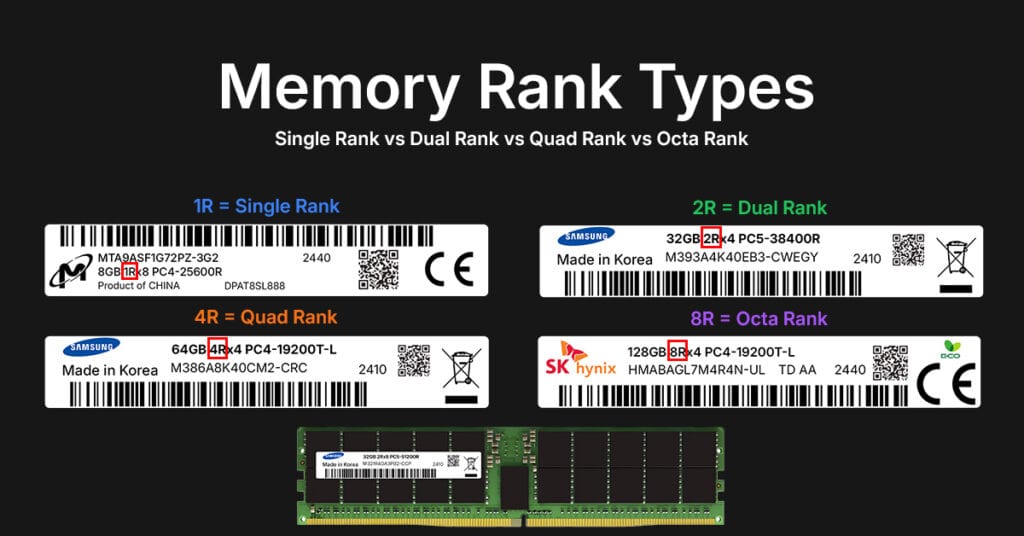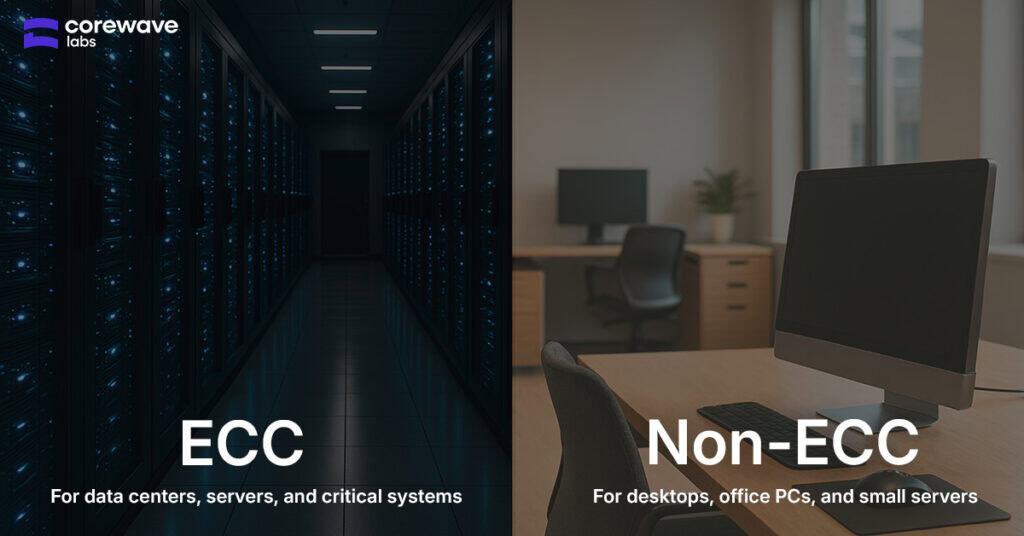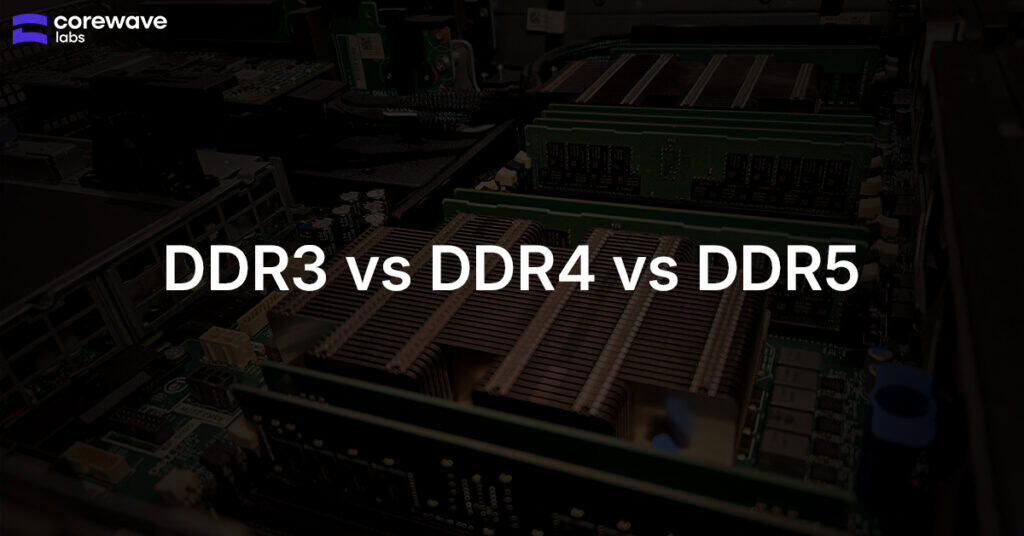Updated on:
| Written by:
Is there DDR6 RAM?
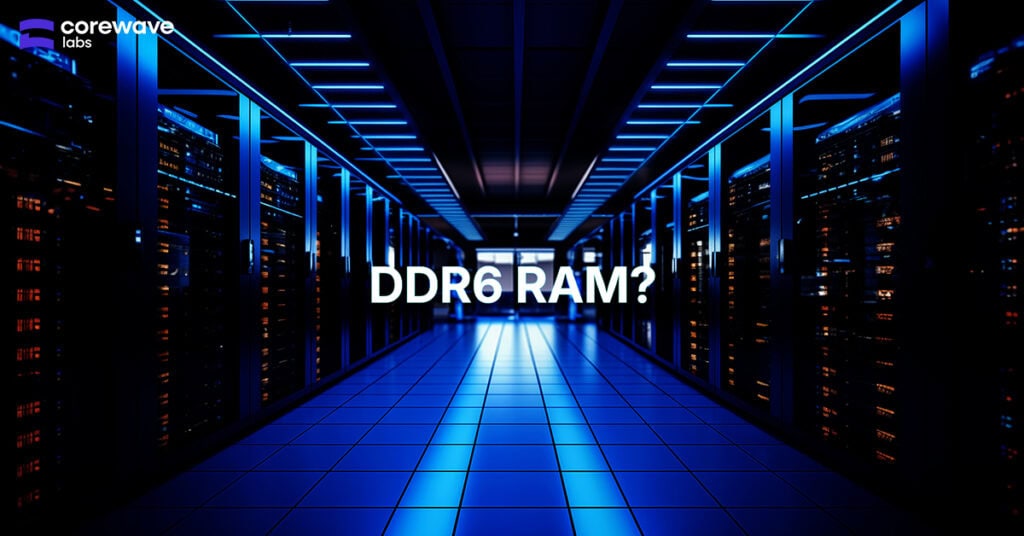
Key Takeaways
- DDR6 RAM is not yet available, but development is in full swing.
- JEDEC is expected to finalize the DDR6 standard by Q2 2025.
- Commercial DDR6 modules may reach the market by late 2025 or early 2026, initially for enterprise and R&D use.
- Projected speeds: 8,800–21,000 MHz, with bandwidth surpassing 134.4 GB/s.
- Designed for data centers, telecom, HPC, and AI—not consumer use (yet).
- New platforms will be required (no backward compatibility with current CPUs or motherboards).
Want the full breakdown on specs, timelines, and enterprise adoption? Keep reading.
Introduction
How soon should you start planning for DDR6 RAM integration into your infrastructure?
The pace of memory innovation is relentless. As networks scale, workloads intensify, and AI pushes infrastructure to new limits, the question isn’t if a faster standard will emerge—it’s when.
DDR6, the next generation of DRAM technology, is already in development. While it hasn’t reached commercial availability, early specifications and performance projections indicate a substantial leap in bandwidth, density, and energy efficiency—metrics that matter for operators running high-throughput, latency-sensitive environments.
This article provides a concise yet comprehensive overview of DDR6’s development status, expected capabilities, and potential implications for future system architecture—so you can start preparing now.
Is DDR6 RAM Available Yet?
No, DDR6 RAM is not yet available, but it is progressing through its standardization phase. JEDEC, the industry body responsible for DRAM specifications, is actively working on DDR6 RAM, with the initial draft released in 2024 and the finalized 1.0 specification expected by Q2 2025.
Based on this timeline, commercial DDR6 modules are unlikely to hit the market before late 2025 or early 2026. However, early samples may appear in R&D labs and with select OEM partners before mainstream availability.
Current discussions indicate DDR6 will support speeds from 8.8 Gbps to 17.6 Gbps, with potential extensions reaching 21 Gbps, making it a significant leap over DDR5. There is also ongoing debate about whether DDR6 will use NRZ or PAM signaling, with initial indications pointing toward NRZ.
For data center operators, telecom providers, and system integrators, this means DDR6 RAM should be on the radar for long-term infrastructure planning, particularly in high-bandwidth applications such as AI, machine learning, and next-gen cloud workloads.
Development Timeline
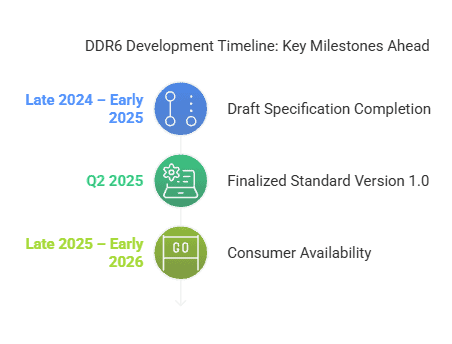
The development of DDR6 RAM is following a structured timeline, with key milestones already underway. JEDEC, in collaboration with major DRAM manufacturers, is working to finalize the standard before moving into mass production phases.
- Draft Specification (Late 2024 – Early 2025)
The initial draft of DDR6 was expected to be completed in late 2024 or early 2025. This draft outlines foundational parameters such as data rates, signaling standards, and power efficiency targets. - Finalized Standard (Q2 2025)
JEDEC aims to finalize version 1.0 of the DDR6 specification by Q2 2025. Once this standard is locked in, memory manufacturers can begin full-scale validation and production planning. - Consumer Availability (Late 2025 – Early 2026)
If the timeline remains on track, DDR6 modules are expected to hit the market between late 2025 and early 2026. Initially, availability may be limited to high-end enterprise applications, R&D environments, and server deployments before mainstream adoption follows in subsequent years.
For telecom operators, system integrators, and data center architects, this means DDR6 RAM is still a future consideration rather than an immediate investment. However, early planning for platform compatibility, power budgets, and integration strategies will be crucial for those looking to leverage its advantages as soon as it becomes viable.
Key Features and Improvements
DDR6 is set to deliver significant advancements across four critical dimensions: performance, capacity, power efficiency, and data integrity. These improvements will have a direct impact on telecom networks, cloud data centers, and high-performance computing (HPC) environments, where memory speed and reliability are essential.
1. Performance Enhancements
- Higher Speeds
DDR6 will significantly boost raw performance, with base speeds ranging from 8,800 MHz to 12,800 MHz, and potential overclocked speeds reaching 17,600 MHz to 21,000 MHz. This marks a major leap over DDR5, which currently maxes out at 8,000 MHz in overclocked configurations. - Increased Bandwidth
DDR6 is projected to exceed 134.4 GB/s, making it well-suited for latency-sensitive, high-throughput workloads such as 5G core networks, AI-driven applications, and large-scale virtualization environments.
2. Higher Capacity
- Scalability to 256 GB Per Module
DDR6 will support modules up to 256 GB per DIMM, a significant increase from DDR5’s typical 64 GB per DIMM limit. This reduces the number of modules needed to scale total system memory, optimizing physical space in dense server configurations. - Implications for Enterprise & Cloud
Higher capacities will enhance virtual machine density, improve in-memory database performance, and support data-heavy telecom workloads that require fast, high-capacity memory pools.
3. Power Efficiency
- Lower Voltage Operation
DDR6 is designed to operate at lower voltages than DDR5, reducing overall power consumption and heat output. This will have a major impact in data centers, edge computing environments, and telecom infrastructure, where energy efficiency directly influences operational costs. - Optimized for Mobile & Edge Computing
Reduced voltage will also benefit high-performance mobile devices, IoT systems, and AI inference workloads at the edge, enabling improved battery efficiency and lower thermal footprints.
4. Advanced Data Integrity
- On-Die ECC (Error Correction Code)
DDR6 will integrate on-die ECC, enhancing memory reliability without relying solely on external controllers. This is critical for enterprise and mission-critical workloads, where data integrity is a top priority. - Read/Write CRC for Improved Stability
The addition of read/write cyclic redundancy check (CRC) will further reduce data corruption risks, enhancing stability in cloud computing, high-availability networking, and real-time analytics applications.
Why DDR6 Matters
The shift to DDR6 isn’t just an incremental update—it’s a fundamental leap in memory technology. As data workloads expand and computing demands intensify, DDR6’s higher speeds, greater bandwidth, and increased efficiency will have broad implications across multiple industries.
1. Impact on High-Performance Computing, Servers & Gaming
- Enterprise & Cloud Computing
For data centers, telecom providers, and hyperscale cloud environments, DDR6 will enable faster data processing, improved AI inference speeds, and better performance for virtualized workloads. This is especially important for real-time analytics, large-scale simulations, and AI model training. - Telecom & Networking
Greater bandwidth will support 5G core networks, NFV (Network Function Virtualization), and high-speed packet processing. Lower latency and reduced power draw also make DDR6 well-suited for edge computing in mobile networks. - Gaming & Consumer Applications
While enterprise use will lead adoption, DDR6 is expected to enter high-end gaming PCs and workstations later, offering better frame rates, lower latency, and smoother multitasking for content creation and next-gen game engines.
2. Future-Proofing Systems & Infrastructure
- Longer Lifecycle for IT Investments
With expected bandwidth doubling over DDR5, systems built from 2026 onward will be better positioned to stay competitive across longer refresh cycles—particularly in compute-heavy sectors like AI and financial modeling. - Reducing Bottlenecks
Higher memory speeds will alleviate common bottlenecks in CPU- and GPU-intensive environments, allowing infrastructure to scale more efficiently without immediate processor upgrades.
3. Considerations for Early Adopters & Industry Watchers
- Availability & Cost
Like previous DRAM transitions, DDR6 will carry a price premium at launch. Enterprise and HPC deployments are expected to adopt first, with broader affordability following as production scales. - Ecosystem Readiness
Successful adoption depends on platform support from server OEMs and chipset manufacturers like Intel and AMD. Tracking platform roadmaps will be key for businesses planning future upgrades.
When Should You Expect to Upgrade?
Adopting DDR6 requires more than just availability—it depends on vendor support, platform compatibility, and market readiness. Below is a realistic timeline for when upgrades may become viable.
1. Manufacturer Release Cycles
- JEDEC Final Specification → Q2 2025
- Early DDR6 Samples → Late 2025 (primarily for OEM and enterprise validation)
- First DDR6 Platforms (Intel/AMD) → Likely 2026
- Mainstream DDR6 Adoption → 2027–2028, as pricing stabilizes and availability increases
2. Platform Compatibility Expectations (Intel, AMD)
- Intel → Historically faster to adopt new memory standards. DDR6-compatible Intel platforms could appear by late 2025 or early 2026.
- AMD → More conservative in rollout. DDR6 support may align with Zen 6 or Zen 7 architectures between 2026 and 2027.
3. Realistic Timeline for Consumer & Enterprise Adoption
- 2026–2027 → Early adoption in enterprise and HPC environments, driven by AI, 5G, and cloud demand
- 2027–2028 → Expansion into telecom, networking, and broader data center infrastructure
- 2028+ → Widespread adoption in consumer desktops, gaming PCs, and general computing
DDR6 RAM: Frequently Asked Questions (FAQ)
When is DDR6 RAM coming out?
DDR6 is expected to launch commercially in late 2025 or early 2026, following JEDEC’s finalized spec release projected for Q2 2025.
Should I get DDR5 or DDR6?
Get DDR5 if you’re upgrading soon. DDR6 will be limited to next-gen platforms and enterprise use when it first launches.
Does DDR6 RAM exist yet?
No, DDR6 is still under development. JEDEC aims to finalize the standard by mid-2025, with modules appearing later that year or in early 2026.
Will DDR6 be compatible with current CPUs and motherboards?
No, DDR6 will require new memory controllers and motherboards. It won’t work with DDR4 or DDR5 systems.
What industries will benefit most from DDR6?
Data centers, telecom, HPC, AI, and cloud infrastructure will benefit most due to DDR6’s speed, capacity, and efficiency.
How fast is DDR6 RAM expected to be?
Base speeds will range from 8,800 to 12,800 MHz, with overclocked speeds up to 21,000 MHz and bandwidth exceeding 134.4 GB/s.
How much faster is DDR6 compared to DDR5?
DDR6 is expected to double the speed and bandwidth of DDR5, supporting faster memory throughput and system performance.
What is the latest RAM type available now?
As of 2025, DDR5 is the latest commercially available DRAM supported by current Intel and AMD platforms.
What’s the difference between DDR5 and DDR6?
DDR6 offers double the bandwidth, higher module capacity (up to 256 GB), better efficiency, and improved on-die ECC.
Conclusion – DDR6 is on the Horizon—Just Not in Your Infrastructure Yet
While DDR6 is shaping up to be a major advancement, there’s no immediate need for enterprises or telecom operators to make the switch. The transition will be gradual, and DDR5 will remain the standard for the next few years.
However, if your organization is planning hardware refresh cycles beyond 2026, it’s wise to begin evaluating DDR6-ready systems. With growing demands from AI, cloud, and 5G networks, DDR6 is well-positioned to support the next generation of performance-intensive infrastructure.
For now, the best approach is to stay informed, monitor vendor roadmaps, and be prepared to integrate DDR6 when the time aligns with your strategic goals.
About the Author

Edgars Zukovskis
Board Member | CoreWave Labs
14+ years of expertise helping telecom operators, datacenters, and system integrators build efficient, cost-effective networks using compatible hardware solutions.
Server Memory for Top Brands
Select Your Server Brand to Find Compatible Memory
Recommended Reads
Discover insights to power your infrastructure.
